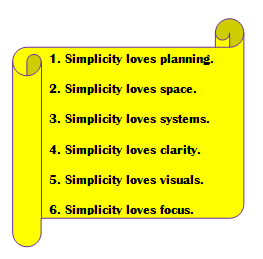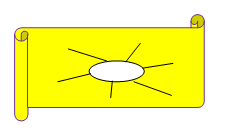Do you keep it simple? Six simple steps.
 I wish to bring to your attention, and deliberate upon, the merits, challenges and opportunities brought forth by making it a “best practice” to avoid complexity in all aspects of your professional endeavors. In other words, “Keep it simple!”
I wish to bring to your attention, and deliberate upon, the merits, challenges and opportunities brought forth by making it a “best practice” to avoid complexity in all aspects of your professional endeavors. In other words, “Keep it simple!”
Simplicity is NOT the process of “dumbing down.” In fact, nothing could be farther from the truth. The mere mention of the word, ‘simple’ can create a feeling of relief and freedom in this increasingly complex, and hectic, world.
These past several weeks I’ve done my “Making an Artful Ask” workshop for hundreds of you from Oregon to Orlando. (It was GREAT!) The feedback was simply, “Now I get it. A clear, simple Ask!” But this light bulb didn’t shine in ten minutes. Only after seeing the simple recipe ,  hearing my examples, considering your own donor, filling in the blanks, speaking your ask in front of the group, experiencing my coaching, speaking it again… repeat with the next participant… then “Now I get it!” appeared. in other words, “It is not easy to be simple.”
hearing my examples, considering your own donor, filling in the blanks, speaking your ask in front of the group, experiencing my coaching, speaking it again… repeat with the next participant… then “Now I get it!” appeared. in other words, “It is not easy to be simple.”
Complexity in our giving options, daily processes, technology, and communications leads to frustration, stress, confusion and missteps. If only we had the time to think! Consider these six simple steps.
1. Simplicity loves planning.
 Planning takes time… and it can be sort of boring. Or, it can seem to not be as urgent as “doing.” Creating a relationship action plan (RAP) for your top major donors gives you a road map for the next steps to take for major gift success. Planning does not delay action, it facilitates it.
Planning takes time… and it can be sort of boring. Or, it can seem to not be as urgent as “doing.” Creating a relationship action plan (RAP) for your top major donors gives you a road map for the next steps to take for major gift success. Planning does not delay action, it facilitates it.
2. Simplicity loves space.
Space in the drawer, space in the file cabinet, space in the schedule. In fact, “simple” often describes elegance, beauty and sophistication versus stuffed, cluttered, and full. Is a full calendar a good thing? Create space by purging, giving away, and adding time for transit and follow up notes with each major gift appointment. Visualize a spacious office (generally uncluttered), an inviting read (generally lots of white space) or a welcoming closet (lots of trips to charity or recycle bin)!
3. Simplicity loves systems or processes.
If it has more than 3 steps, create a system for it. You will discover short cuts when you write down the steps… and better yet, you might just be able to delegate a task that has a clear system. (more space!) It also saves stress and time looking for pieces, keys, readers, whatever. “A place for everything and everything in its place.” We’ve all heard it.
4. Simplicity loves clarity.
 Are you clear on the message? The ask? The next step? The “why?” The impact? Consider the famous Blaise Pascal quote: “I have made this [letter] longer, because I have not had the time to make it shorter.” 1657. In other words, taking time to simplify correspondences of all types makes then clearer and eliminates rambling and confusion.
Are you clear on the message? The ask? The next step? The “why?” The impact? Consider the famous Blaise Pascal quote: “I have made this [letter] longer, because I have not had the time to make it shorter.” 1657. In other words, taking time to simplify correspondences of all types makes then clearer and eliminates rambling and confusion.
5. Simplicity loves visuals.
“A picture is worth a thousand words” refers to the notion that a complex idea can be conveyed with just a single still image. A mind map is an effective tool for getting a grasp on complex ideas, multiple projects, just too much! Creating a vision board has the added benefit that your life changes to match the images you’ve collected.

I have drawn the above on napkins, yellow pads, the back of business cards… it simplifies how an endowment works for the donor even though my drawings are never this fancy ;). The best planned giving folks are masters at boxes and arrows. It helps show how complex giving vehicles work.
6. Simplicity loves focus.
“Simple” is not simple to maintain. Without a conscious, sustained effort, the papers pile up, the email reaches the thousands and we neglect to reply to a key message, we’re late for a donor call and we’re not prepared for our major gift ask. So set the timer for 30 minutes and focus on simplifying your desk, work, head and life. Enjoy the peace, elegance, space and joy!
